Introduction
Nestled amidst the rugged beauty of the Orkney Islands in Scotland, a remarkable archaeological site lies waiting to be explored. Skara Brae, a Neolithic village dating back to around 3180 BC, has captured the imagination of historians and archaeologists alike. Discovered in 1850 after a powerful storm revealed its hidden structures, this ancient settlement offers an unparalleled glimpse into the daily lives of our prehistoric ancestors.

Older than the iconic Stonehenge, Skara Brae stands as a testament to the ingenuity and sophistication of Neolithic communities. This remarkably well-preserved village, often likened to the “Scottish Pompeii,” provides a unique window into a bygone era, revealing the intricate design and construction techniques of its inhabitants. From the interconnected stone houses to the meticulously crafted furnishings, every aspect of Skara Brae speaks to the remarkable achievements of its residents.
In this captivating blog post, we will delve into the rich history and fascinating insights that Skara Brae has to offer. We’ll explore the village’s remarkable architecture, uncover the daily lives of its inhabitants, and investigate the enduring mysteries surrounding its eventual abandonment. Join us on this journey through time as we unravel the secrets of this remarkable Neolithic settlement.
The Discovery of Skara Brae
The story of Skara Brae’s discovery is as intriguing as the site itself. In the winter of 1850, a powerful storm swept across the Orkney Islands, unleashing the full force of the North Atlantic upon the rugged coastline. As the storm raged, the waves crashed against the cliffs, revealing a remarkable sight – the outlines of ancient stone structures emerging from the sand.
This unexpected discovery piqued the curiosity of the local landowner, William Watt, who began to investigate the newly exposed site. Over the following years, Watt and his team carefully excavated the area, uncovering a remarkably well-preserved Neolithic village that had been hidden for millennia.
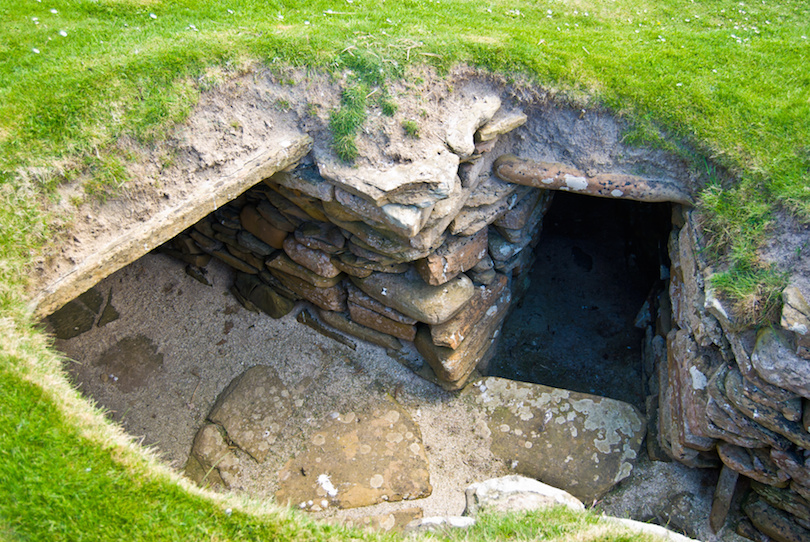
The structures that emerged from the sand were unlike anything seen before in Scotland. The village consisted of eight interconnected stone houses, each featuring a central hearth, stone beds, and elaborately carved stone dressers. The houses were connected by a series of covered passageways, creating a cohesive and carefully planned community.
As the excavations continued, the researchers were amazed by the level of sophistication and attention to detail evident in the construction of Skara Brae. The houses were built using carefully selected and expertly crafted stones, with each structure exhibiting a remarkable degree of uniformity. This uniformity, coupled with the presence of shared amenities like the covered walkways, suggested a community with a high level of social organization and cooperation.
The discovery of Skara Brae sent shockwaves through the archaeological community, as it challenged the prevailing assumptions about the technological and cultural capabilities of Neolithic societies. This remarkable site, with its well-preserved structures and evidence of advanced planning and construction techniques, offered a tantalizing glimpse into the lives of our prehistoric ancestors.
Exploring the Architectural Wonders of Skara Brae
As you step into the Neolithic village of Skara Brae, the first thing that strikes you is the remarkable state of preservation. Unlike many other archaeological sites, where the passage of time has reduced structures to mere ruins, Skara Brae stands as a testament to the enduring craftsmanship of its builders.
The village consists of eight interconnected stone houses, each measuring approximately 40 square meters in size. These houses were constructed using carefully selected and expertly shaped stones, with the walls rising to a height of around 3 meters. The roofs of the houses, which were likely made of thatch or turf, have long since disappeared, but the stone foundations and walls remain remarkably intact.
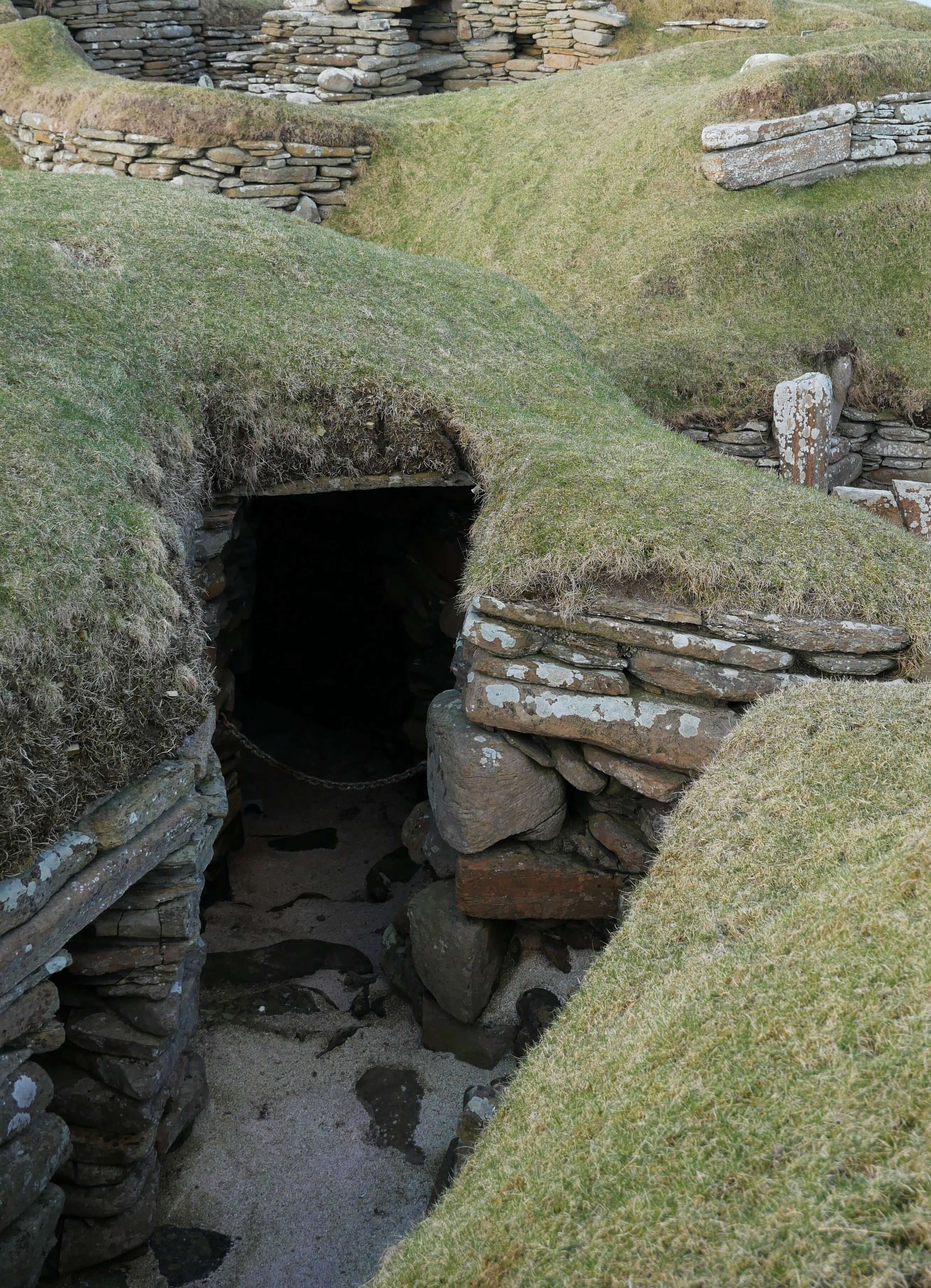
One of the most striking features of the Skara Brae houses is the meticulous attention to detail in their design and construction. Each dwelling features a central hearth, which would have served as the focal point of the home, providing both warmth and light. Surrounding the hearth are a series of stone-built furnishings, including beds, dressers, and storage compartments.
The stone beds, which are found in every house, are particularly fascinating. These sturdy structures were likely covered with animal skins or woven mats, providing a comfortable sleeping surface for the inhabitants. The stone dressers, on the other hand, were likely used for the storage and display of personal belongings, such as pottery, tools, and other household items.
The interconnected nature of the Skara Brae houses, linked by a series of covered passageways, suggests a high degree of community organization and cooperation. These covered walkways not only provided protection from the elements but also facilitated movement and communication between the various dwellings.

The uniformity of the houses, both in terms of their size and layout, is another remarkable aspect of Skara Brae’s architecture. This consistency suggests a well-planned and coordinated community, where each household likely played a specific role in the overall functioning of the village.
Interestingly, the lack of significant social stratification evident in the Skara Brae houses contrasts with the hierarchical structures often associated with Neolithic societies. This egalitarian arrangement may have been a reflection of the community’s shared reliance on the land and sea for their sustenance and survival.
As you explore the ruins of Skara Brae, it’s easy to be transported back in time, imagining the bustling activities and daily routines of its Neolithic inhabitants. The meticulous craftsmanship and thoughtful design of the structures offer a tangible connection to the past, allowing us to glimpse the lives and experiences of our distant ancestors.
Daily Life in Skara Brae
Stepping inside the stone houses of Skara Brae, we can begin to piece together the daily lives of the Neolithic inhabitants who once called this village home. Through the careful examination of the archaeological evidence, researchers have been able to shed light on the various aspects of life in this remarkable settlement.
One of the most striking features of the Skara Brae houses is the presence of the central hearth. These stone-built structures would have been the heart of each dwelling, serving as the primary source of warmth, light, and cooking. Surrounding the hearth, the inhabitants would have gathered to prepare meals, engage in various crafting activities, and share stories and experiences.
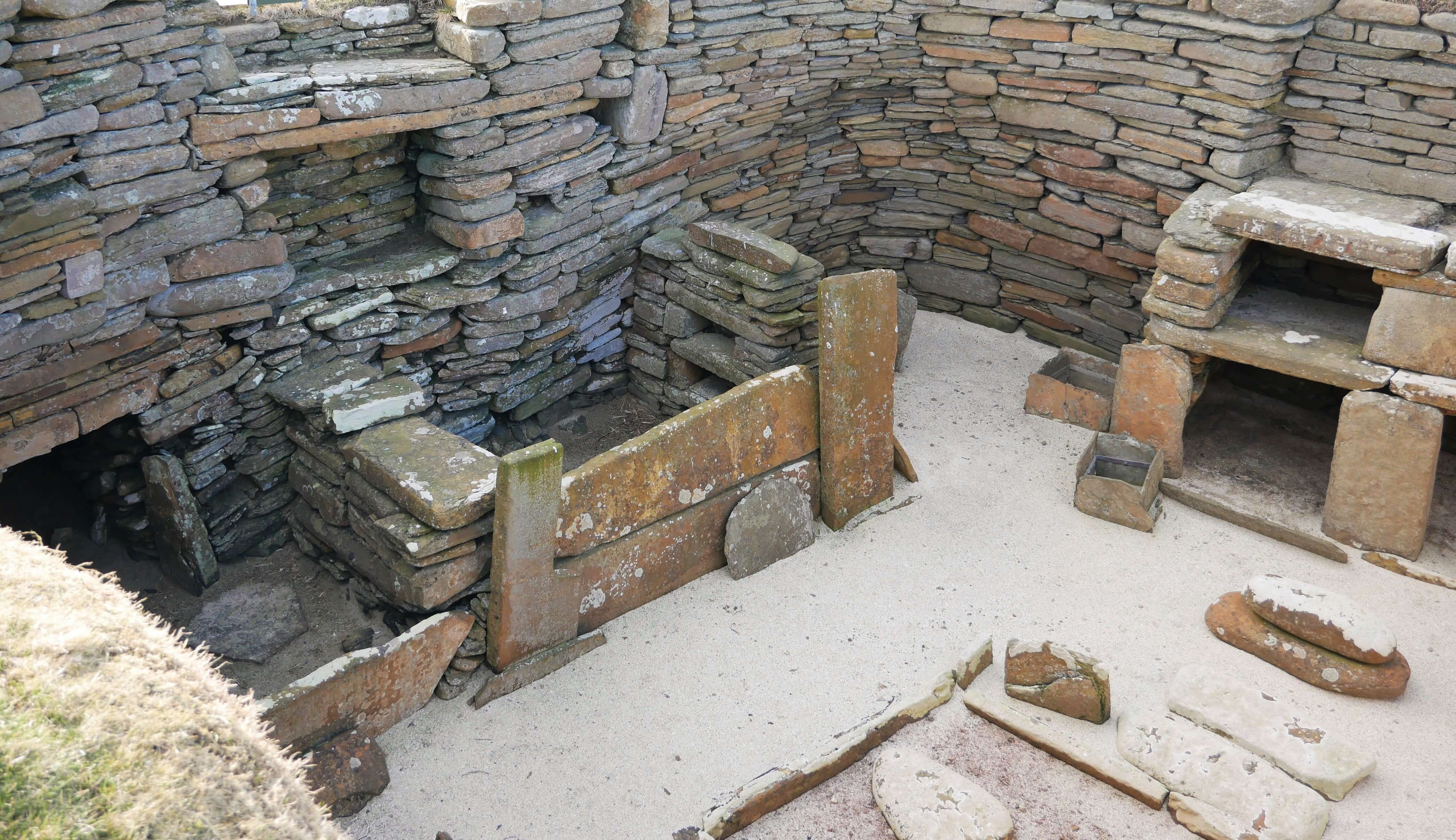
The stone beds found in each house provide clues about the sleeping arrangements and personal spaces within the Skara Brae community. These sturdy structures, likely covered with animal skins or woven mats, would have offered a comfortable resting place for the inhabitants. The presence of the stone dressers, which were used for the storage and display of personal belongings, suggests that each household had a designated area for their own possessions.
The inhabitants of Skara Brae were primarily engaged in farming and fishing, as evidenced by the various tools and implements found during the excavations. Archaeologists have uncovered a wealth of stone tools, including knives, scrapers, and hoes, which would have been used for tasks such as tending to the land, processing raw materials, and preparing food.
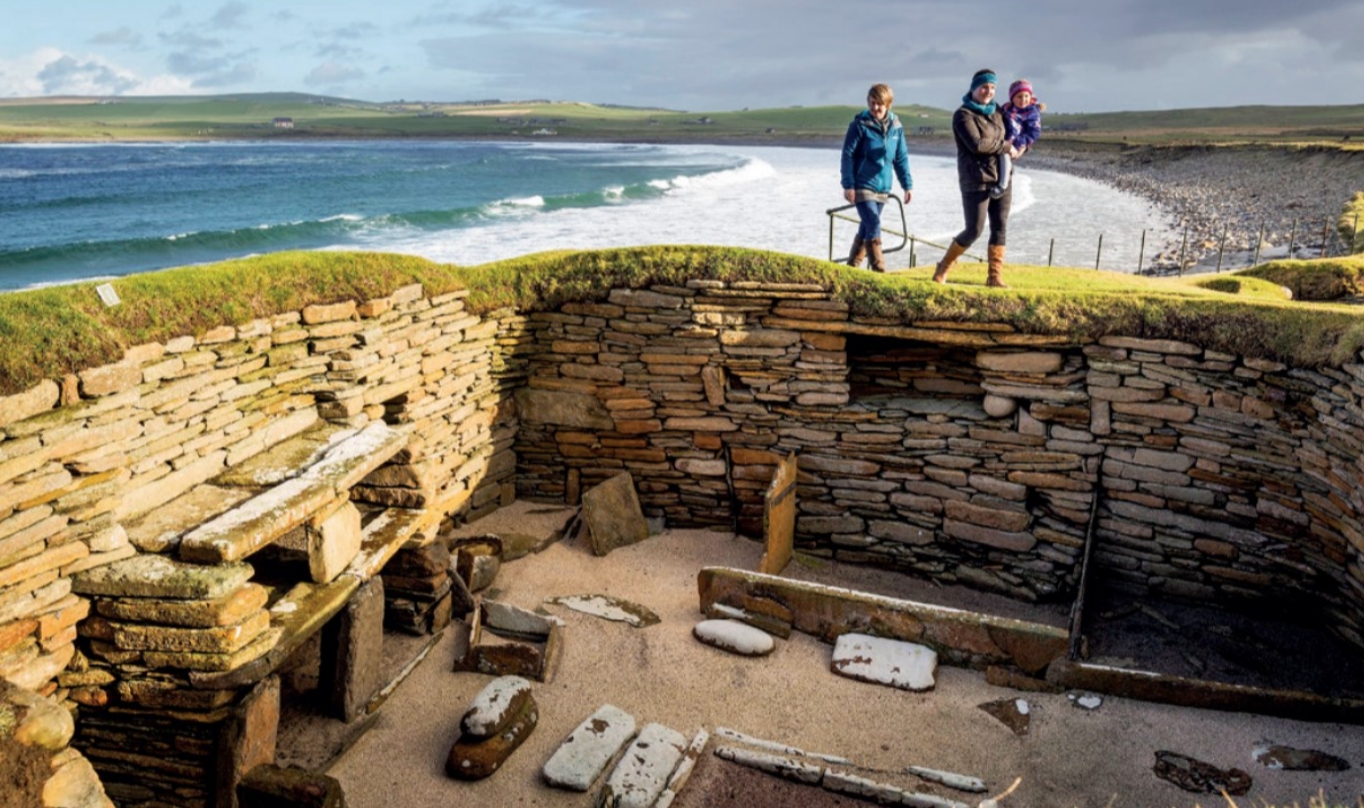
The discovery of animal bones and shells within the Skara Brae houses also provides insights into the dietary habits of the inhabitants. It appears that the villagers supplemented their agricultural activities with hunting and fishing, taking advantage of the abundant resources available in the surrounding land and sea.
In addition to their subsistence activities, the Skara Brae inhabitants were also skilled craftspeople. The presence of carved stone objects, such as the intricate designs found on the dressers, suggests a high level of artistic expression and technical expertise. It’s likely that the villagers engaged in a range of crafting activities, including weaving, pottery making, and the production of various household items.
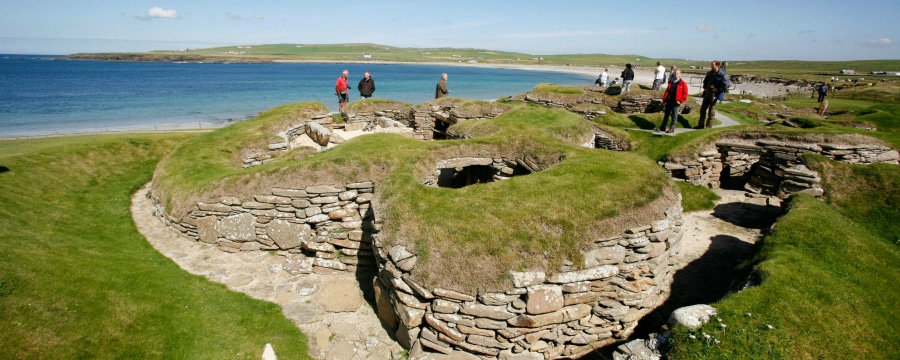
The uniformity of the Skara Brae houses, both in terms of their size and layout, suggests a community with a high degree of social organization and cooperation. This egalitarian arrangement may have been a reflection of the shared reliance on the land and sea for their sustenance, as well as a way to ensure the equitable distribution of resources and responsibilities within the village.
As we explore the daily lives of the Skara Brae inhabitants, we are struck by the resilience, ingenuity, and resourcefulness of these Neolithic people. Their ability to thrive in the harsh Orkney environment, and to create a well-organized and sophisticated community, is a testament to the remarkable achievements of our prehistoric ancestors.
Theories on the Abandonment of Skara Brae
Despite the wealth of information that Skara Brae has provided about Neolithic life, the reasons for the village’s eventual abandonment remain a topic of ongoing debate and speculation among archaeologists and historians. Several theories have been proposed to explain this intriguing mystery.
One of the most commonly cited theories is that of climate change. During the Neolithic period, the Orkney Islands experienced a gradual shift towards a colder and wetter climate, which may have made the environment increasingly challenging for the Skara Brae inhabitants. This climatic shift could have disrupted the village’s agricultural and fishing activities, leading to food shortages and other resource-related stresses.

Another theory revolves around the encroachment of sand, which appears to have played a significant role in the eventual abandonment of Skara Brae. Over time, the relentless winds and waves of the North Atlantic deposited layer upon layer of sand, gradually burying the village and obscuring its structures. This gradual process may have made the living conditions increasingly difficult, forcing the inhabitants to eventually abandon the site.
Some researchers have also proposed that social or economic shifts within the Neolithic society may have contributed to the abandonment of Skara Brae. It’s possible that changes in trade patterns, population movements, or the emergence of new power structures could have disrupted the delicate balance of the village, leading to its eventual decline.
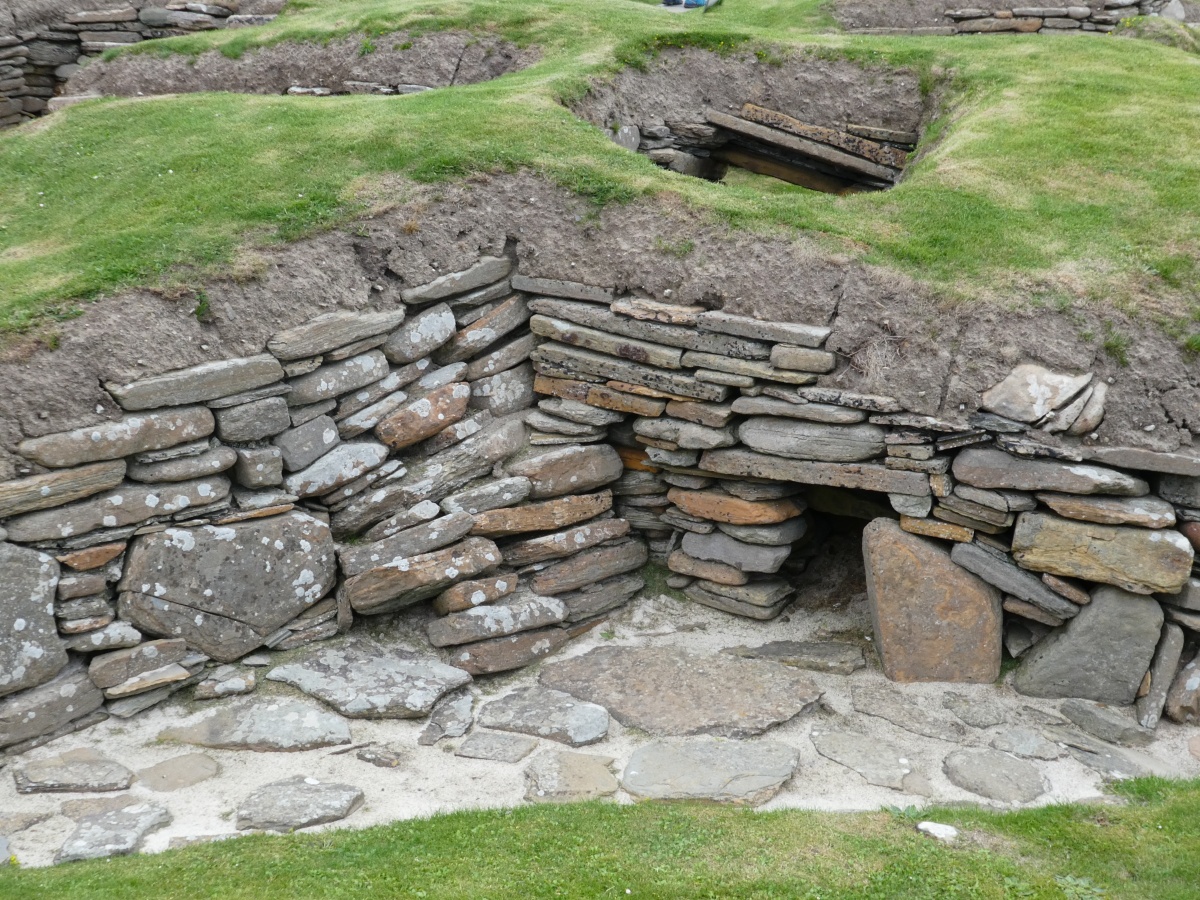
Another intriguing theory suggests that a significant natural disaster, such as a severe storm or even a tsunami, may have played a role in the abandonment of Skara Brae. The well-preserved state of the village, with no signs of a sudden or violent end, makes this theory less likely. However, the possibility of a catastrophic event that forced the inhabitants to flee cannot be entirely ruled out.
Regardless of the specific reasons for the abandonment, it’s clear that the inhabitants of Skara Brae faced significant challenges in their efforts to maintain their community. The village’s eventual demise serves as a poignant reminder of the fragility of human settlements, even in the face of the remarkable resilience and ingenuity that the Skara Brae inhabitants demonstrated throughout their time in the Orkney Islands.
Conclusion: The Enduring Legacy of Skara Brae
Skara Brae stands as a testament to the remarkable achievements of our Neolithic ancestors. This well-preserved Neolithic village, with its intricate stone houses, interconnected passageways, and meticulously crafted furnishings, offers an unparalleled glimpse into the daily lives and cultural practices of a bygone era.
The discovery of Skara Brae in 1850 sent shockwaves through the archaeological community, challenging long-held assumptions about the technological and social capabilities of Neolithic societies. The site’s exceptional state of preservation, often likened to the “Scottish Pompeii,” has provided researchers with a wealth of information about the architectural, social, and economic aspects of life in this ancient settlement.
As we explore the ruins of Skara Brae, we are struck by the ingenuity and resilience of its inhabitants. The uniformity of the houses, the presence of shared amenities, and the lack of significant social stratification suggest a well-organized and egalitarian community, where the inhabitants worked together to ensure the survival and prosperity of the village.
The reasons for the eventual abandonment of Skara Brae remain a subject of ongoing debate, with theories ranging from climate change and sand encroachment to social or economic shifts, and even the possibility of a catastrophic natural disaster. Despite the uncertainty surrounding the village’s demise, the legacy of Skara Brae continues to captivate and inspire researchers, historians, and the general public alike.
As we delve deeper into the secrets of Skara Brae, we are reminded of the enduring power of archaeology to connect us with our past. This remarkable Neolithic settlement stands as a testament to the ingenuity, resilience, and cultural achievements of our prehistoric ancestors, offering a tangible link to a world that has long since vanished.
Through the ongoing exploration and study of Skara Brae, we continue to uncover the rich tapestry of human history, expanding our understanding of the past and gaining valuable insights that can inform our present and shape our future. The legacy of this remarkable Neolithic village will undoubtedly continue to captivate and inspire generations to come.
